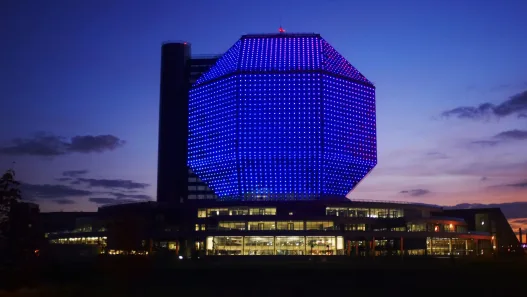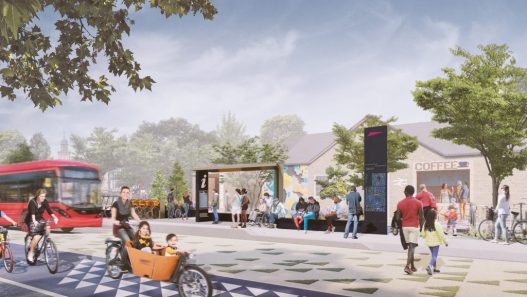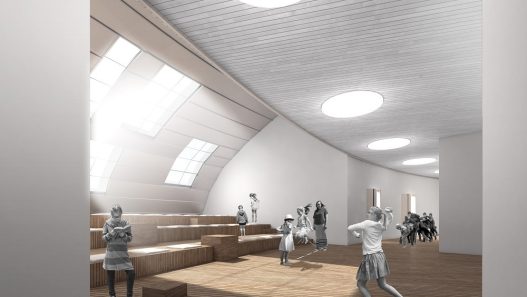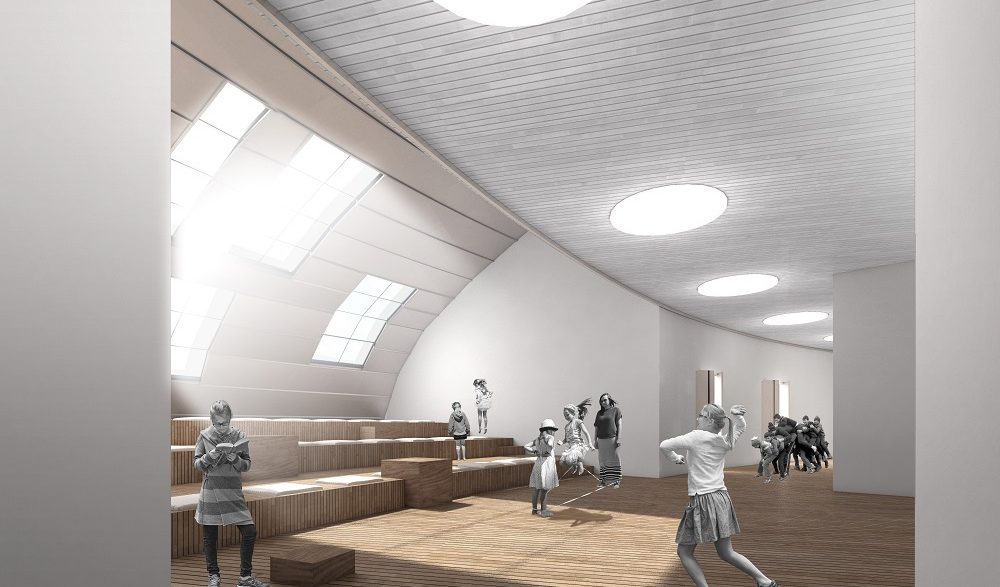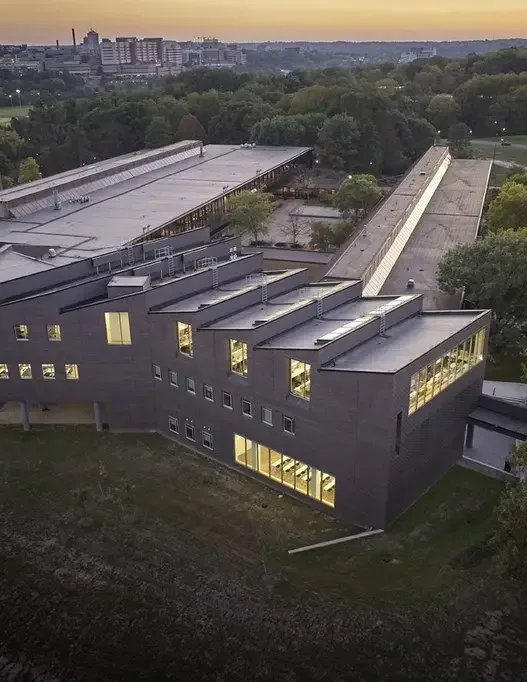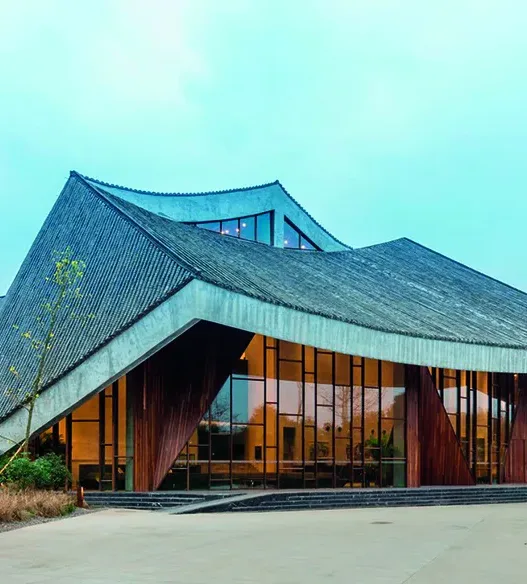Architectural education plays a crucial role in shaping the minds of future architects. It is a journey that combines art, science and technology, encouraging students to explore the built environment in innovative ways. As cities evolve and expectations of architecture change, the need for creative thinkers who can tackle complex problems has never been more important. This educational environment is not just about learning to draft plans; it is about nurturing a mindset that embraces creativity, sustainability and a deep understanding of human needs.

The Importance of Creativity in Architecture
Creativity lies at the heart of architecture. It enables architects to design spaces that inspire, comfort and serve societies. The built environment reflects cultural narratives and social values, and creative thinking allows architects to challenge traditional norms and push boundaries. Consider, for example, the transformative impact of iconic structures such as the Sydney Opera House or the Guggenheim Museum in Bilbao. These architectural marvels did not emerge from rigid formulas; they resulted from creative visions that reshaped the way we perceive space and aesthetics.
Moreover, creativity fosters problem-solving skills that are essential to addressing contemporary challenges such as climate change and urbanization. Architects must think outside the box to design sustainable buildings that meet the needs of diverse populations while harmonizing with their environments. In this context, creativity is not just an asset, it is a requirement for future leaders in architecture.
Overview of Current Architecture Programs
Today’s architecture programs vary widely, offering different approaches to education. Many institutions encourage students to engage with real-world projects, emphasizing a mix of theoretical knowledge and practical application. Schools often offer hands-on experience opportunities through design studios, internships, and collaborative projects with local communities.
However, while many programs strive to foster creativity, they can sometimes fall short by adhering too closely to traditional methodologies. In some cases, curricula can prioritize technical skills over creative exploration, resulting in graduates who know the rules of construction well but lack the visionary mindset needed to innovate. Recognizing this gap has led many schools to reevaluate their educational strategies and find a balance that encourages both technical proficiency and creative exploration.
Challenges in Architectural Education
Architectural education faces a number of challenges that can hinder the development of creativity. One major problem is the pressure of standardized assessments, which can discourage experimentation and risk-taking. When students are graded according to rigid criteria, they may be reluctant to explore unconventional ideas for fear of being evaluated poorly.
Additionally, the high cost of education can limit access to diverse voices and perspectives in the field. Without a broad range of experience and backgrounds, the discipline risks becoming insular, lacking the rich tapestry of ideas necessary for true innovation.
Additionally, the rapid nature of technological advances can overwhelm curricula that struggle to keep up. As new tools and methodologies emerge, educators must find ways to integrate these innovations without compromising the core principles of creative design.
Trends in Architectural Pedagogy
In response to these challenges, architectural pedagogy is also evolving. There is an increasing emphasis on interdisciplinary collaboration, and students are encouraged to draw inspiration from fields such as sociology, environmental science, and art. This holistic approach helps students understand the multifaceted nature of architecture and provides a broader perspective on design challenges.
Another trend is the incorporation of technology into the creative process. For example, virtual reality allows students to visualize their designs in immersive environments, encouraging innovative thinking and experimentation. What’s more, many programs now prioritize sustainability, encouraging students to consider the environmental impact of their designs from the outset.
In addition, a growing number of architecture schools are adopting a studio-based approach that reflects real-world practice. This method emphasizes teamwork and communication—essential skills for future architects who will need to collaborate with a variety of stakeholders throughout their careers.
The Role of Innovation in Curriculum Design
Innovation in curriculum design is crucial to fostering creativity in architectural education. Schools are rethinking traditional models and integrating project-based learning that challenges students to tackle real-life problems. This hands-on approach allows students to experiment, make mistakes, and learn from them in a supportive environment.
Programs are also beginning to include community engagement as a core component of the curriculum. By working directly with communities, students gain insight into the social and cultural contexts of their designs and develop the skills to create spaces that resonate with people on a personal level.
Additionally, mentoring and networking opportunities are increasingly recognized as vital elements of the educational experience. Connecting students with industry professionals can inspire and guide them, exposing them to different perspectives and innovative practices.
Ultimately, encouraging creativity in architectural education is essential to preparing future leaders who can navigate the complexities of the built environment. By embracing innovative pedagogies, addressing current challenges, and nurturing a culture of creativity, architecture schools can cultivate the creative thinkers needed to shape our world for future generations.
In architecture, a dynamic field, creativity is the cornerstone of successful design and innovation. As architecture schools aim to develop the next generation of leaders, the importance of cultivating creativity is increasing. This exploration examines the fundamental principles of creative thinking, shedding light on the processes, techniques, collaborations, and real-world applications that exemplify the importance of creativity in architectural education.
Basic Principles of Creative Thinking
Creative thinking in architecture essentially involves the ability to generate new ideas and solutions. This process is not simply spontaneous; it often requires a structured approach that allows students to explore diverse perspectives and challenge traditional boundaries. Adopting a mindset that values curiosity and experimentation encourages students to think beyond traditional designs. Understanding that creativity is a nurturable talent rather than an innate ability opens doors for all aspiring architects to express their unique visions.
Creative thinking encompasses a variety of principles, including divergent thinking, which involves generating multiple solutions to a problem, and convergent thinking, which narrows down those solutions to the most viable options. By balancing these approaches, architecture students can develop a toolbox of strategies to overcome design challenges and innovate on their projects.
Understanding Creative Processes
The creative process in architecture typically progresses in stages, starting with inspiration. This stage may include research, observation, and immersion in various environments to spark new ideas. Following inspiration, students enter the idea generation process, where brainstorming sessions and sketches lead to the development of concepts. Prototyping and refinement come next, allowing students to test their ideas through models and digital simulations. Finally, evaluation and feedback serve as critical elements that allow students to reflect and improve their work.
A vivid example of this creative process can be seen in the design of community spaces. Students often begin by exploring community needs and come up with innovative designs that are both functional and aesthetically pleasing. This process highlights the importance of empathy in architecture, as understanding users transforms ideas into meaningful solutions.
Techniques That Improve Creativity
To encourage creativity, architecture schools can implement a variety of techniques to enhance students’ creative capacities. Encouraging students to learn across disciplines opens avenues for inspiration, as insights from fields such as art, psychology, and technology can bring architectural concepts to life. Activities such as design meetings, where students collaboratively address real-world challenges, foster a spirit of innovation and teamwork.
Another effective technique is the use of creative constraints. By deliberately limiting resources or imposing specific guidelines, students are often pushed to think outside the box. This paradox of constraint leading to freedom can yield remarkable results, showing that creativity often thrives in unexpected environments.
What’s more, integrating technology into the creative process can be transformative. Tools like virtual reality and 3D modeling software allow students to visualize their designs in an immersive way, increasing their ability to innovate. These technologies not only streamline the design process, they also encourage experimentation, allowing students to push their creative boundaries.
The Impact of Collaboration
Collaboration serves as a vital element in fostering creativity in architecture schools. Working together on projects enriches the creative process by allowing students to share different perspectives and skill sets. Through collaboration, students learn to communicate effectively, negotiate ideas, and synthesize diverse inputs into cohesive designs.
Real-world projects often reflect this collaborative spirit. For example, many architecture schools partner with local governments or community organizations to design public spaces. These initiatives not only provide students with hands-on experience, they also emphasize the importance of teamwork in addressing real community needs. The resulting designs are often more innovative and inclusive because they include a wide range of voices and perspectives.
Case Studies of Successful Creative Projects
Examining successful creative projects reveals how architectural education can lead to groundbreaking design. The High Line in New York City is a notable example of an abandoned railroad track that was transformed into a vibrant public park. The project was the result of a collaborative effort involving architects, landscape designers, and community activists. This multidisciplinary approach not only revitalized a neglected area, but also fostered a new model of urban design that prioritizes green space and community engagement.
Another inspiring example is Bosco Verticale in Milan, an innovative residential project with vertical gardens on balconies. This design addresses environmental challenges while improving urban livability. The project exemplifies how creativity in architecture can lead to sustainable solutions by combining aesthetics with ecological responsibility.
Measuring Creativity in Student Work
Assessing creativity in student work presents unique challenges, but it’s crucial to fostering growth and innovation. Traditional grading systems often fail to capture the nuances of the creative process. Instead, architecture schools can adopt more holistic approaches that emphasize the journey rather than just the end product. Assessing the development of ideas, use of materials, and ability to express concepts can provide a richer understanding of a student’s creative abilities.
Feedback should also be constructive and supportive, encouraging students to take risks and explore unconventional paths. Peer reviews and critiques can help students refine their ideas and gain valuable insights from their colleagues. By creating an environment where creativity is valued and nurtured, architecture schools can empower students to become the visionary leaders of tomorrow.
Ultimately, encouraging creativity in architecture schools is essential to developing future leaders who can navigate the complexities of design and innovation. By understanding creative processes, implementing effective techniques, embracing collaboration, and carefully measuring creativity, educators can create an environment where creative thinking thrives and ultimately shape a more vibrant and sustainable architectural environment.
In today’s rapidly evolving world, the role of architecture is not just to design buildings, but to shape environments that foster society, sustainability, and innovation. As we look to the future, it is essential for architecture schools to nurture creativity in their students and encourage them to become future leaders in the field. This includes not only developing design skills, but also integrating new technologies and methodologies that will prepare them for the complexities of modern architectural practice.
Integration of Technology into Architectural Education
The integration of technology into architectural education is transforming the way students learn and create. As digital tools become increasingly sophisticated, they offer exciting opportunities to foster creativity and collaboration among students. By embracing these technologies, architecture schools can better equip their students to meet the challenges of contemporary design practice.
Emerging Tools and Software
In recent years, the world of architecture has been revolutionized by advanced design software and tools. Programs such as Autodesk Revit, Rhino, and SketchUp allow students to visualize their ideas in three dimensions, providing a more intuitive understanding of space and form. These tools not only streamline the design process, but also encourage experimentation and innovation. By providing students with access to these new technologies, educational institutions are empowering them to push boundaries and explore new architectural possibilities.
What’s more, the rise of generative design software is opening up new avenues for creativity. This technology uses algorithms to generate a multitude of design options based on set parameters, allowing students to explore solutions they hadn’t previously considered. The process becomes a collaboration between human intuition and computational power, fostering a uniquely creative environment.
The Role of Virtual Reality
Virtual reality (VR) is another transformative technology that is reshaping architecture education. By immersing students in a virtual environment, they can experience their designs as if they were physically there. This not only helps visualize space, but also allows for interactive exploration of design concepts. Students can walk inside their buildings, understand scale, and interact with materials and textures in a way that traditional models cannot replicate.
What’s more, VR can facilitate collaborative projects where students from different locations can meet in a shared virtual space. This fosters teamwork and communication skills, which are essential qualities for future leaders in architecture. The ability to present and critique designs in a virtual environment prepares students for real-world scenarios where they must communicate effectively with clients and stakeholders.
Online Learning Platforms for Architecture
The COVID pandemic has accelerated the adoption of online learning platforms, which are vital to architecture education. These platforms offer flexibility, allowing students to access courses, tutorials, and resources from anywhere in the world. This democratization of knowledge expands opportunities for aspiring architects who may not have access to traditional education.
With online courses, students can learn at their own pace, diving deep into topics like sustainable design, urban planning, and historical architecture. Additionally, virtual workshops and webinars featuring industry experts inform and inspire students by providing insight into current trends and practices. The ability to connect with a global network of peers and professionals enriches the learning experience, fostering a community of innovation and creativity.
Using Data Visualization in Design
Data visualization is becoming increasingly important in architecture, allowing designers to interpret complex information and present it in an accessible format. Using visual data, students can analyze factors such as environmental impact, user demographics, and urban dynamics. This analytical approach improves design processes, resulting in more informed and effective architectural solutions.
For example, incorporating geographic information systems (GIS) into design projects allows students to visualize site conditions and evaluate factors such as climate, topography, and infrastructure. This holistic understanding of context is crucial to creating sustainable and responsive designs. By integrating data visualization into their education, architecture students learn to balance creativity with analytical thinking, preparing them for the multifaceted challenges of the profession.
Future Technologies Shaping Architecture
As technology continues to advance, architecture schools must be at the forefront of these developments to prepare their students for the future. Innovations such as building information modeling (BIM), 3D printing, and smart building technologies are already playing a significant role in architectural practice. By incorporating these technologies into the curriculum, students can gain hands-on experience and insight into the future of architecture.
For example, 3D printing is revolutionizing the way buildings are constructed by enabling rapid prototyping and customized designs. Students who understand these technologies will be better equipped to innovate and lead in an ever-evolving profession. Additionally, as sustainability becomes a central theme in architecture, the integration of technologies that promote energy efficiency and environmental responsibility will be crucial.
Ultimately, developing future leaders in architecture requires a comprehensive approach that integrates technology and fosters creativity. By embracing emerging tools, virtual reality, online learning platforms, data visualization, and future technologies, architecture schools can develop a new generation of architects ready to tackle the challenges of the modern world. This holistic education not only enhances their design skills, but also prepares them to lead the way in redefining our built environment.
In the ever-evolving field of architecture, the demand for innovative thinkers who can tackle complex challenges is greater than ever. As we look to the future, it is crucial to foster creativity in architecture schools. This includes not only developing design skills, but also encouraging a mindset that embraces collaboration and interdisciplinary learning. By engaging with diverse fields, architects of the future can create solutions that are not only aesthetically pleasing, but also socially responsible and environmentally sustainable.
Promoting Interdisciplinary Learning
Interdisciplinary learning is crucial to shaping well-rounded architects. When students are encouraged to move beyond the boundaries of traditional design education, they discover the value of different perspectives. By integrating knowledge from a variety of disciplines, architecture students can innovate in ways that a single-disciplinary education cannot.
Imagine a classroom where architecture students collaborate with peers from environmental science, engineering, arts, and social sciences. This collaboration helps students see how their designs affect and are affected by a variety of factors, creating a richer educational experience. For example, a project focused on urban redevelopment could benefit greatly from environmental science insights into sustainability, along with engineering principles for structural integrity.
Architecture and Environmental Science
The relationship between architecture and environmental science is becoming increasingly vital. As climate change poses significant challenges, architects must create buildings that minimize their ecological footprint. By studying environmental science, architecture students learn about sustainable materials, energy efficiency, and the importance of integrating natural landscapes into urban designs.
Consider the example of a green building project. Students who understand environmental science can apply passive solar design, rainwater harvesting, and biodiversity principles to their projects. This knowledge allows them to design spaces that not only serve human needs but also respect and enhance the environment. By encouraging dialogue between these fields, architecture schools can graduate students who are not only designers but also stewards of the planet.
Collaboration with Engineering Programs
Collaboration between architecture and engineering programs is another vital aspect of interdisciplinary learning. Architects and engineers must work hand in hand to bring designs to life. While architects focus on aesthetics and functionality, engineers ensure those designs are safe, workable, and sustainable.
In an ideal educational setting, architecture students would work on collaborative projects with engineering students. This collaboration would allow them to appreciate the technical aspects behind their designs. For example, when architects design a bridge, they might learn about load distribution and materials from their engineering colleagues. Such collaborations not only enhance students’ knowledge, but also prepare them for the realities of professional practice, where teamwork is essential.
The Impact of Art and Design
Art and design play an important role in architecture by influencing how spaces are perceived and experienced. By integrating fine arts and design thinking courses, architecture schools can help students develop a keen eye for aesthetics and an understanding of how artistic principles can enhance functionality.
For example, a student might explore how color, texture, and form can be used to evoke emotion in a public space. Architecture students can learn to collaborate with artists or designers to create environments that inspire and engage users. This creative exploration encourages architects to think outside the box and push the boundaries of traditional design.
Incorporating Social Sciences into Architecture
Architecture is not just about buildings; it is fundamentally about people. Incorporating social sciences into architectural education helps students understand the social impact of their designs. Students who study sociology, psychology, and anthropology can learn how to create spaces that foster social interaction and well-being.
Consider a community center designed to serve diverse populations. Understanding social dynamics can guide students to create inclusive spaces that meet diverse cultural needs. By emphasizing the human side of architecture, schools can develop empathetic, socially conscious architects who can respond to the needs of the communities they serve.
Benefits of the Holistic Education Approach
The benefits of a holistic approach to education in architecture are immense. When students are encouraged to learn across disciplines, they emerge as versatile and innovative thinkers. This comprehensive education prepares them to tackle the multifaceted challenges of contemporary architecture.
Graduates from programs that emphasize interdisciplinary collaboration are better equipped to lead in their professions. They are able to approach design problems from multiple perspectives, considering environmental, technical, artistic and social impacts. Ultimately, this fosters a new generation of architects who are not only talented designers, but also visionary leaders ready to make a positive impact on the world.
In conclusion, fostering creativity through interdisciplinary learning in architecture schools is essential to developing future leaders. By embracing collaboration across disciplines, architectural education can produce well-rounded professionals who are ready to face the complexities of the modern world.
In the ever-evolving field of architecture, developing the next generation of leaders is of great importance. Creativity is not only a vital skill for architects, but also the driving force behind innovative design solutions that address contemporary challenges. Architecture schools can empower students to become visionary leaders in their future careers by creating an environment that encourages creative thinking and collaboration. This research focuses on how to create a supportive community in architecture schools, emphasizing the importance of mentoring, networking, student engagement, professional workshops, and a culture of feedback.
Building a Supportive Community
A supportive community is the backbone of any educational institution, especially architecture schools, where collaboration and creativity thrive in a nurturing environment. This community consists of students, faculty, and industry professionals who interact and inspire each other. When students feel supported, they are more likely to express their ideas freely, take risks in their designs, and explore unconventional solutions.
Creating this sense of community involves establishing open channels of communication, encouraging teamwork, and cultivating a culture that celebrates diversity of thought. For example, architecture schools can host regular social events, design sessions, or collaborative projects that bring together students with different backgrounds and skills. These opportunities not only foster camaraderie, but also broaden students’ perspectives and spark creativity by allowing them to learn from one another.
The Role of Mentoring in Architecture Schools
Mentoring plays a crucial role in shaping aspiring architects. Experienced professionals can provide invaluable insights as they guide students through the complexities of both academic and professional environments. A strong mentor-student relationship can help students overcome challenges, develop their design philosophies, and gain confidence in their abilities.
Mentors can provide personalized feedback on student projects, share their own experiences, and even help students build their professional networks. For example, a mentor might introduce a student to an architecture firm, which could lead to internship opportunities that could significantly enhance their practical experience. Such relationships not only enrich academic learning, but also foster a sense of belonging and purpose among students.
Creating Networking Opportunities
Networking is essential in architecture, where connections often lead to job opportunities and collaborative projects. Architecture schools can facilitate networking by hosting events that connect students with alumni, industry professionals, and potential employers.
For example, hosting career fairs, panel discussions, or informal meet-and-greets allows students to interact with professionals and learn about various career paths. These interactions can give students insight into the realities of the profession as well as help them understand the skills and knowledge most valued in the industry. When students make these connections early, they are better prepared for their careers after graduation.
Encouraging Student Organizations and Competitions
Student organizations and design competitions can be powerful tools for developing creativity and leadership skills. These platforms allow students to express their ideas, collaborate on projects, and take on leadership roles in their communities.
By joining organizations focused on architecture, sustainability, or social impact, students can explore their interests while developing critical skills like teamwork, project management, and communication. Both local and international competitions challenge students to push their creativity, often resulting in innovative design solutions that address real-world issues. For example, a design competition focused on affordable housing can inspire students to develop practical yet creative solutions to pressing social problems.
Inviting Industry Professionals for Workshops
Workshops led by industry professionals are invaluable in bridging the gap between academic learning and real-world application. These sessions provide students with first-hand knowledge of current trends, technologies and practices in the field of architecture.
When professionals share their expertise through hands-on workshops, students gain practical skills that complement their theoretical knowledge. For example, a workshop on digital modeling software can help students develop their technical skills so they can better visualize and present their ideas. These workshops also often spark discussions about the future of architecture, encouraging students to think critically and creatively about their role in shaping the built environment.
Developing a Culture of Feedback and Improvement
A culture of feedback is essential to fostering creativity and growth in architecture schools. Encouraging students to both give and receive constructive criticism helps them develop a critical eye for their own work and the work of their peers.
In a supportive environment, feedback becomes a tool for growth rather than a source of anxiety. Faculty can create structured opportunities for peer review and critique so that students can learn how to articulate design intentions and respond to the perspectives of others. This process not only improves students’ designs but also prepares them for the collaborative nature of professional practice, where feedback is an integral part of the design process.
Ultimately, architecture schools can foster creativity and empower future leaders by creating a supportive community that emphasizes mentoring, networking, student engagement, professional workshops, and a culture of feedback. These elements work together to enhance the educational experience, equipping students with the skills and confidence they need to succeed in architecture careers. As future leaders emerge, they will carry forward the spirit of innovation and collaboration that defines the profession of architecture.
Architecture is not just about designing buildings, it is about shaping the environment we live in. As we move towards an increasingly complex world, the role of architectural education becomes even more important. Encouraging creativity and innovation among budding architects is crucial. This requires rethinking how we teach and inspire the next generation to tackle the challenges ahead.
Future Directions in Architectural Education
Looking ahead, architectural education must evolve to meet the demands of an ever-changing world. Traditional curricula are being re-evaluated to include interdisciplinary approaches that blend art, technology, and the social sciences. This shift encourages students to think critically and creatively about the spaces they design. The integration of virtual reality and digital modeling tools into the curriculum pushes the boundaries of traditional design by allowing students to visualize their ideas more effectively.
Additionally, educational institutions are increasingly focusing on collaboration with other fields, such as engineering, urban planning, and environmental science. This holistic approach not only enriches the learning experience, but also prepares students to work in diverse teams, a necessity in today’s collaborative professional environments.
Adapting to Global Challenges
The architectural profession is not isolated from global challenges such as climate change, urbanization, and social inequality. Schools must equip students with the knowledge and skills to address these challenges. This means emphasizing the importance of context in design and encouraging students to consider cultural, economic, and environmental factors in their projects.
Real-world projects, such as community-based initiatives or sustainable urban developments, provide students with hands-on experience in addressing these pressing issues. By engaging with local communities, students learn to create designs that are not only aesthetically pleasing but also socially responsible and contextually relevant. This engagement fosters empathy and a deeper understanding of architecture’s impact on society.
Innovations in Sustainable Design Education
Sustainability is no longer a buzzword; it is a fundamental principle in architecture. As the world grapples with environmental issues, architectural education is also shifting toward sustainable design practices. Schools are integrating green building, renewable energy, and resource-efficient materials into their curricula.
Students are encouraged to explore innovative solutions, such as biophilic design, which aims to connect building occupants more closely to nature. Projects focusing on passive solar design or the use of recycled materials not only teach technical skills, but also instill a sense of responsibility towards the planet. Additionally, partnerships with environmental organizations can enrich educational experiences by providing students with insight into real-world sustainability issues.
Preparing Students for the Changing Job Market
The job market for architects is evolving, influenced by technological advances and changing societal needs. Architecture schools should prepare students for this changing environment by incorporating skills such as digital literacy, data analysis, and project management into their programs.
Internships and collaborations with industry professionals provide students with hands-on experience and networking opportunities, ensuring they are job-ready when they graduate. Additionally, schools are beginning to emphasize entrepreneurial skills, encouraging students to think beyond traditional employment and consider starting their own practices or ventures. The ability to adapt to new technologies and market demands will be crucial for future architects who want to succeed in their careers.
Promoting Lifelong Learning in Architecture
The field of architecture is dynamic and requires professionals to constantly update their knowledge and skills. Architectural education should instill the value of lifelong learning in students. This can be achieved by encouraging participation in workshops, seminars and online courses covering new trends and technologies.
Furthermore, encouraging a mindset of curiosity and inquiry will empower students to seek out new knowledge throughout their careers. By creating a culture that values continuous growth and adaptation, architecture schools can help students become not only skilled professionals but also passionate advocates for innovation in the field.
Envisioning the Future of Architecture Schools
Looking ahead, we see architecture schools as having the potential to become hubs of creativity and innovation. By embracing interdisciplinary approaches, sustainability, and technological advances, these institutions can produce well-rounded architects ready to tackle the challenges of tomorrow.
Imagine schools where students collaborate with artists, scientists, and community leaders on projects that address real-world problems. Imagine classrooms equipped with state-of-the-art technology that enables immersive design experiences. The future of architecture education is creating inclusive, adaptable environments that inspire creativity and critical thinking. By doing so, we can develop tomorrow’s leaders who will shape the world with thoughtful, innovative, and responsible design.




